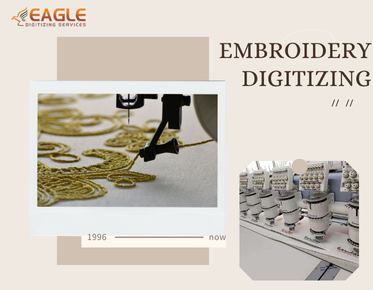The Transformative Power of Embroidery
Bringing Life to Fabrics
Embroidery has the unique ability to completely transform dull and plain fabrics into vibrant, eye-catching pieces. The right combination of designs and colors can bring out the hidden beauty of even the most ordinary piece of cloth. This magic is the result of human creativity—designs that are first imagined and then transferred onto fabric using embroidery techniques. Whether done by hand or through modern machinery, embroidery is all about compatibility between the design and the fabric. Sometimes, even simple patterns can look extraordinary when stitched on the right fabric, as the contrasts between the colors and textures enhance the appeal of both the embroidery and the material it’s sewn on.
The Role of Design and Fabric Compatibility
The success of embroidery often hinges on the compatibility between the design and the fabric. A beautifully designed pattern can look unimpressive if stitched on the wrong fabric, while even a modest design can shine if paired with a fabric that complements it well. The fabric serves as a canvas for the design, and their combination can bring out the best in both elements, creating a product that is much more than the sum of its parts.
Hand Embroidery vs. Digital Embroidery
Hand Embroidery: Time-Consuming and Skill-Intensive
There are two main types of embroidery: hand embroidery and digital embroidery. Hand embroidery is a traditional method that has been around for centuries. It is often viewed as an art form, requiring years of experience, patience, and skill to master. Each stitch is meticulously placed by hand, which can take hours or even days, depending on the complexity of the design. This labor-intensive process makes hand embroidery more expensive, as the time and effort involved are significant. Additionally, the risk of mistakes is high; a single error can ruin hours of hard work.
Digital Embroidery: Faster and More Efficient
On the other hand, digital embroidery is a more modern technique that uses computerized machines to stitch designs onto fabric. This method requires far less time and effort than hand embroidery, making it a more cost-effective solution for businesses and individuals alike. Although it lacks the handmade charm, digital embroidery offers precision and consistency that is difficult to achieve by hand. For these reasons, many people prefer digital embroidery, especially for large-scale projects where time and efficiency are key factors.
Exploring the Benefits of Embroidery Digitizing
A Modern Trend with Great Advantages
Embroidery digitizing is a rising trend in the world of embroidery, offering numerous advantages over traditional hand embroidery. It not only simplifies the process but also allows for intricate designs to be stitched quickly and accurately. For businesses, this technology offers an opportunity to mass-produce high-quality embroidered products in less time and with less manual effort. As a result, embroidery digitizing has become a popular choice for companies looking to increase efficiency without compromising on design quality.
Less Effort, More Output
The beauty of embroidery digitizing lies in its ability to reduce the time and effort traditionally associated with embroidery. By using embroidery software and digitizers, you can create a design in minutes that would take hours to stitch by hand. This efficiency makes it easier to complete larger projects faster, helping businesses meet customer demands more effectively.
The Embroidery Digitizing Process
Step One: Accessing the Right Equipment
The first step in embroidery digitizing involves gathering the necessary tools and equipment. A modern computer with embroidery digitizing software is essential. This software provides access to various design options and editing features that allow you to create unique embroidery patterns. The digitizing software converts your design into a file format that can be read by embroidery machines, which will then stitch the design onto the fabric.
Step Two: Gaining the Necessary Skills
While digitizing is much easier than hand embroidery in many ways, it still requires a level of skill and understanding. Learning how to use the software and mastering the intricacies of design conversion is key to creating successful embroidery projects. Many companies offer training courses, or you can self-teach through tutorials and practice. Once you’ve gained the necessary knowledge, you’ll find that embroidery digitizing is an efficient and enjoyable process.
The Convenience of Outsourcing Embroidery Digitizing
Save Time by Hiring a Professional
In today’s busy world, finding time to learn and manage embroidery digitizing can be challenging. If you don’t have the time or resources to digitize your designs yourself, there’s no need to worry. You can easily outsource the task to professional embroidery digitizing service providers. Thanks to the internet, accessing these services has never been easier. You can connect with reputable companies online, send them your design, and they’ll handle the rest.
Choosing the Right Service Provider
While many embroidery digitizing service providers are available online, not all deliver the same quality of work. It’s essential to do thorough research before selecting a company to handle your digitizing needs. Look for providers with a proven track record, customer testimonials, and a strong portfolio of previous work. By choosing a reliable service provider, you can ensure that your designs are digitized accurately and to your satisfaction.
Keeping Up with Modern Embroidery Trends
Selecting Trendy Designs
Embroidery is not just about the process; it’s also about keeping up with the latest fashion trends. To ensure that your embroidered designs are stylish and relevant, it’s essential to stay updated on current trends in the industry. This includes monitoring the types of patterns, color combinations, and embroidery styles that are popular at the moment. By choosing modern designs, you can ensure that your finished products appeal to a wide range of customers.
Following Industry Leaders for Inspiration
To get a better idea of what’s trending, consider following industry leaders and companies that specialize in embroidery digitizing. These organizations often offer insights into the latest design trends and techniques. For example, companies like Eagle Digitizing provide not only digitizing services but also expert guidance on choosing designs that match current trends. By partnering with such service providers, you can stay ahead of the curve in the fast-evolving world of embroidery.
Why Eagle Digitizing Stands Out
A Trusted Embroidery Digitizing Service Provider
When it comes to choosing a service provider for your embroidery digitizing needs, Eagle Digitizing is highly recommended. Known for their expertise and quality, they provide exceptional digitizing services that cater to both small and large businesses. They have the experience and knowledge needed to guide you through the digitizing process and ensure that your designs are transferred accurately and efficiently to your chosen fabric.
Excellent Customer Support and Guidance
Eagle Digitizing goes beyond simply providing digitizing services. They offer valuable advice and insights into the best design choices for your projects. Whether you're unsure about the compatibility of your design with the fabric or need help selecting a trendy pattern, their team is there to help. With a proven track record and excellent customer service, Eagle Digitizing is a great partner for anyone looking to explore the world of embroidery digitizing.
Conclusion: The Future of Embroidery is Digital
Embroidery digitizing has transformed the art of embroidery, making it faster, more affordable, and accessible to a wider audience. While traditional hand embroidery still holds its charm, the efficiency and precision offered by digital methods are hard to ignore. Whether you choose to master the digitizing process yourself or outsource to a trusted service provider like Eagle Digitizing, one thing is clear: the future of embroidery lies in digital techniques. Embrace this modern trend and take your embroidery designs to the next level.
FAQs About Embroidery Digitizing
1. What type of fabric is best for embroidery digitizing?
Most fabrics can be used for embroidery digitizing, but fabrics like cotton, polyester, and linen work particularly well for machine embroidery.
2. Is embroidery digitizing expensive?
While purchasing the software and equipment can be costly, outsourcing the digitizing process to a professional service provider is generally affordable and cost-effective.
3. How do I know if a design is suitable for digitizing?
Complexity, size, and detail are factors to consider. It’s important to work with a professional who can help adjust the design to be more suitable for embroidery.
4. How long does it take to digitize an embroidery design?
The time it takes depends on the complexity of the design, but most professional services can digitize a design within 24-48 hours.
5. Can I digitize designs at home without professional help?
Yes, with the right software and training, you can digitize embroidery designs at home. However, it may take time to master the necessary skills.



